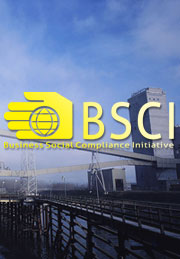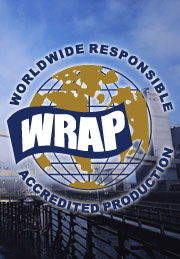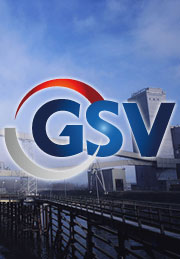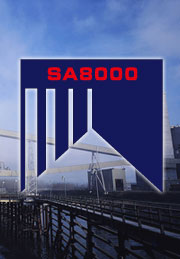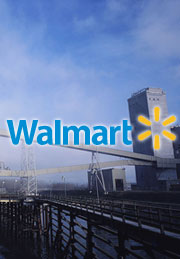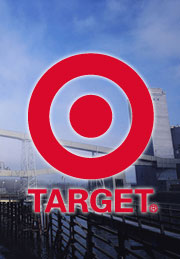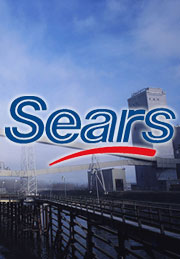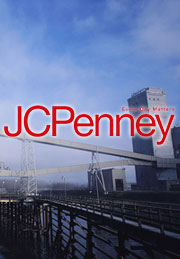- OCS
- Dollar General验厂咨询
- Wal-Mart验厂咨询
- Disney验厂咨询
- Target验厂咨询
- Jcpenney验厂咨询
- Homedepot验厂咨询
- Adidas验厂咨询
- SEARS/K-MART验厂咨询
- VF验厂咨询
- coca-cola验厂咨询
- Tesco验厂咨询
- PUMA验厂咨询
- KOHLS验厂咨询
- SQP验厂咨询
- 梅西验厂咨询
- Inditex验厂咨询
- Li&Fung反恐验厂咨询
- PRIMARK验厂咨询
- PVH验厂咨询
- avon验厂咨询
- Carrefour验厂咨询
- Bon-ton验厂咨询
- 迪卡侬验厂咨询
- Costco验厂咨询
- LEVIS验厂咨询
- Quiksilver验厂咨询
- Lowe's验厂咨询
- WOOLWORTHS验厂咨询
- ZARA验厂咨询
- C&A验厂咨询
- sgs验厂咨询
- NEXT验厂咨询
- coc验厂咨询
- HM验厂咨询
- TJX验厂咨询
- GAP验厂咨询
- Marks Spencer验厂咨询
- Nike验厂咨询
- Mattel验厂咨询
- 其它验厂咨询
电话:18605772928
地址:温州平阳县鳌江镇金鳌路21幢
3单元201室
电话:021-51029391
手机: 18601606208
热线:4006-800-016
邮箱:chaowang@tranwin.org
地址:昆山市花桥商银路1255号双联国际商务中心6幢4楼(邮寄)
Checklist -OHSAS 18001
General requirements
4.1.1 How is the scope of the occupational health and safety management system defined?
4.1.2 How is the maintenance of the occupational health and safety management system ensured?
4.1.3 How is it ensured that the occupational health and safety management system meets the requirements of the standard OHSAS 18001?
4.1.4 Is the occupational health and safety management system at the individual locations comprehensive and effectively implemented at the time of the assessment?
4.2 OH&S policy
4.2.1 How and where has the top management defined, documented and implemented an occupational health and safety policy?
4.2.2 To what extent has a specific occupational health and safety policy been formulated for the organisational unit or location?
4.2.3 Is the occupational health and safety policy consistent with any corporate occupational health and safety policy (if applicable)?
4.2.4 How are hazards dealt with in terms of specific protection related to work and health?
4.2.5 How is the commitment to continuous improvement dealt with in terms of protection related to work and health?
4.2.6 To what extent is the obligation to comply with relevant statutory requirements (e.g. occupational protection legislation) and other requirements embodied in the occupational health and safety policy?
4.2.7 By which means is it ensured that the occupational health and safety policy provides a basis for achieving the occupational health and safety objectives?
4.2.8 Which methods are used to communicate the occupational health and safety policy to the employees?
4.2.9 How is the occupational health and safety policy made available to the public/interested parties?
4.2.10 How is it ensured that the occupational health and safety policy is regularly reviewed for its relevance, appropriateness and effectiveness?
4.3 Planning
4.3.1 Planning for hazard identification, risk assessment and risk control
4.3.1.1 What is the general impression of the procedure for continuous(regular, progressively updated )identification of hazards, for the evaluation of risks and the application of necessary control measures?
4.3.1.2 In this context, how are routine and non-routine activities taken into account?
4.3.1.3 In this context , how are all persons with access to the workplace ( including subcontractors, service providers, visitors and authorized third parties) taken into account?
4.3.1.4 In this context, how are all facilities in the workplace which are provided by the company itself or by others (e.g. subcontractors, service providers and authorized third parties) taken into account?
4.3.1.5 How is ensured that all relevant hazards in terms of occupational health and safety are recorded and evaluated?
4.3.1.6 How are the relevant hazards documented? Is there a register of hazards or alternatively a corresponding registry (e.g. noise registry) with the corresponding information?
4.3.1.7 To what extent and in which way do the results of the evaluation of hazards and the effects of the control measures influence the establishment of occupational health and safety objectives and the occupational health and safety management programme?
4.3.1.8 How has it been ensured that the methods applied for the identification of hazards and the evaluation of risks have been so defined in terms of their area of application, form and the time factors applied that they are proactive, rather than reactive?
4.3.1.9 How is the classification of hazards undertaken in the context of occupational health and safety measures?
4.3.1.10 How is it determined which risks should be eliminated or controlled with the assistance of measures extracted from the corresponding occupational health and safety objectives and occupational health and safety management programmes?
4.3.1.11 How is it ensured that the methods employed for the identification of hazards and the evaluation of risks are consistent with the generally acknowledged rules of the related technology ( values acquired through experience from operational practice and the possibilities and the limits of the measures applied)?
Note: A subsidiary question should be raised in this context about the systematic approach applied to the method used. It is permissible to apply various different methods.
4.3.1.12 How is it ensured that the methods referred to above make it possible to identify the need for facilities relevant to occupational health and safety and training measures, as well as the possible need for the optimisation of business processes?
4.3.1.13 How is it ensured that the methods referred to above provide for the monitoring of measures as necessary to provide reassurance that they are carried out in an effective and timely manner?
4.3.2 Legal and other requirements
4.3.2.1 How is it ensured that the requirements of legal regulations which are relevant to occupational health and safety are recorded and that this information is made available to all concerned?
4.3.2.2 How is it ensured that information about requirements relevant to occupational health and safety and other requirements and their amendments is communicated to the employees of the company and to other relevant interested parties?
4.3.2.3 How are these external requirements presented so as to be clear and comprehensible?
4.3.2.4 How does the organization receive information about changes?
4.3.2.5 How is ensured that the occupational health and safety requirements and other requirements applicable to the organization are up-to-date?
4.3.2.6 How is the management of the company or the location informed about these changes?
4.3.2.7 How are requirements stipulated in permits integrated into the system, if appropriated?
4.3.2.8 Is there an overview of permits and the conditions resulting from them which are relevant to occupational health and safety?
How is it ensured that corrective actions are undertaken if statutory and other requirements applicable to the organization are not complied with?
4.3.3 Objectives
4.3.3.1 How, and by whom, are appropriated occupational health and safety objectives for the company, it’s activities and the associated level of hazards established and published?
4.3.3.2 Who authorizes the occupational health and safety objectives and how are the objectives distributed among/agreed by the individual departments/areas of activity(“cascading the objectives”)?
4.3.3.3 Which aspects are taken into account during the process of establishing objectives (e.g. statutory and other requirements, activities relevant to occupational health and safety hazards and risks, best available technology, technical possibilities, internal/business environment, existing internal company occupational health and safety measures and interested parties)?
4.3.3.4 How is it ensured that the occupational health and safety policy and the principle of continuous improvement are reflected in the occupational health and safety objectives?
4.3.3.5 How is the “measurability” ( where this is possible of the occupational health and safety objectives ensured?
4.3.3.6 How are deadlines set for the achievement of the occupational health and safety objectives?
4.3.3.7 How are the occupational health and safety objectives of the individual organisational units correlated or harmonized?
4.3.3.8 How is the implementation of the occupational health and safety objectives monitored?
4.3.3.9 How are the occupational health and safety objectives progressively revised or newly laid down?
4.3.3.10 How are the occupational health and safety objectives integrated into the occupational health and safety management programme?
4.3.4 OH&S management programme(s)
4.3.4.1 How are occupational health and safety management programmes established and authorized?
4.3.4.2 How is the occupational health and safety management programme structured which elements ( e.g. reponsibilities, authority and entitlements, tools, schedules and appropriated quantification, where possible ) does it contain?
4.3.4.3 How is the connection made between the occupational health and safety objectives and the occupational health and safety management programme or programmes?
4.3.4.4 How is continuous improvement ensured?
4.3.4.5 What approach is adopted when new or changed activities, products, services and/or organisational arrangements are introduced?
4.3.4.6 How is the implementation of the measures of the occupational health and safety management programme monitored?
4.3.4.7 How is the occupational health and safety management programme modified or extended as necessary if , for example, in consequence of internal organisational changes(restructuring, etc.) it becomes necessary to pursue other objectives and/or to apply different time schedules?
4.4 Implementation and operation
4.4.1 Structure and responsibility
4.4.1.1 How are the tasks, responsibilities, areas of competence and mutual relations of all persons with organizational, management, executive and inspection functions specified in relation to occupational health and safety?
4.4.1.2 How is the composition of the organisation responsible for occupational health and safety established and announced ( person responsible to (top) management for occupational health and safety, e.g. management representative, representative of top management, plant representative, line management with responsibility for implementing the occupational health and safety management system)?
4.4.1.3 How are the required tools for implementation, control, monitoring and improvement of the occupational health and safety management system made available ,including the necessary technical personnel, e.g. company doctors, technical specialists for occupational health and safety and occupational health and safety officer?
4.4.1.4 Have the appointment and areas of competence of the representative of top management been defined?
4.4.1.5 In what way does the representative of top management ( or the person give this responsibility by the representative of top management) regularly report on the performance of the occupational health and safety management system.
4.4.1.6 How do all employees work together with management functions to ensure the continuous improvement of the occupational health and safety management system?
4.4.1.7 Have adequate numbers of company doctors, technical specialists for occupational health and safety, occupational health and safety officers and first aiders been nominated, trained and appointed, in accordance with local statutory requirements?
4.4.1.8 Have the aforementioned technical staff been appointed in writing, and has adequated written notice of this been given to all employees?
4.4.1.9 How are their tasks, responsibilities and areas of competence defined?
4.4.1.10 How have the relevant authoritied( e.g. official bodies responsible for occupational health and safety and craft associations) been informed about the company organisation or the appointment of the aforementioned technical staff? Have special / exceptional arrangements been applied for( e.g. for technical specialists for occupational health and safety)?
4.4.1.11 How is it ensured that the aforementioned technical staff fulfil the statutory requirements for technical qualifications?
4.4.1.12 How is it ensured that the company doctors and technical specialists for occupational health and safety who are required by law have direct access to the person responsible for occupational health and safety ( representative of top management)
4.4.1.13 How are activities relevant to occupational health and safety associated with the corresponding hazards and risks so that the required technical qualifications of the employees may be defined for this purpose?
4.4.2 Training, awareness and competence
4.4.2.1 How are training needs in relation to occupational health and safety determined?
4.4.2.2 What procedures are employed to ensure that employees are aware of
n the importance of conformance with the employees are aware of policy, with additional requirements associated with it and the occupational health and safety management system,
n actual and possible consequences of their activities for occupational health and safety and the positive contribution they can mane to occupational health and safety by their own personal performance,
n their own role and responsibility in complying with the occupational health and safety policy and procedures ( including emergency precautions and emergency measures) and
n potential consequences of departure from established sequences / specified operating procedures?
4.4.2.3 How are the resultant training needs specified and the corresponding resources approved (e.g. approved training schedule)?
4.4.2.4 How is it ensured that the statutory representatives meet their obligations with respect to further training?
4.4.2.5 How is further education or training provided to those employees who work in areas which are of particular relevance for occupational health and safety ( high risk)?
4.4.2.6 What statutory courses of education, training and instruction are undertaken ( e.g. in accordance with 20 GefStoffV ( Hazardous Materials Act ) and variou craft association safety regulations)?
4.4.2.7 How are senior staff trained in their special responsibilities for occupational health and safety?
4.4.3 Consultation and communication
4.4.3.1 What procedures have been established for internal and external communication?
4.4.3.2 What internal communication channels ( communication networks) have been established?
4.4.3.3 How are employees informed about the performance of the organisation in the area of occupational health and safety?
4.4.3.4 What possibilities are available for employees to participate in the development and checking of the occupational health and safety policy?
4.4.3.5 What possibilities are there for employees to participate in the development and checking of the occupational health and safety policy?
4.4.3.6 How are employees drawn into consultations about changes which ( may) affect occupational health and safety at the workplace?
4.4.3.7 How and by whom are the employees represented in matters relating to occupational health and safety?
4.4.3.8 How are the employees informed of who represents them in matters relating to occupational health and safety?
4.4.3.9 How are the employees informed of who in the top management is specially appointed as first point of contact for occupational health and safety ( management representative)?
4.4.3.10 By which means ( procedure) are relevant questions and information from external parties received, documented and answered?
4.4.3.11 What are the procedures for communication with the authorities and other external bodies (e.g. offices for occupational health and safety and craft associations)?
4.4.3.12 How are subcontractors, service providers, authorised third parties and external companies present in the workplace informed about the occupational health and safety policy and the relevant requirements of the occupational health and safety management system which they must also observe?
4.4.3.13 How is the public informed about the most important occupational health and safety risks and their control?
4.4.3.14 How is the subject of a “health and safety committee” dealt with in the company?
Note: At this point the formal regulations ( based on statutory requirements, e.g. AsiG) and the specific internal company regulations should be scrutinized and evaluated accordingly. Special regulations aligned with BG requirements should also be scrutinized.
The following questions are not at present relevant, as there is no official model for preparing company declarations on occupational health and safety.
4.4.3.15 How and by whom is the company declaration on occupational health and safety prepared? Who authorises this company declaration?
4.4.3.16 How is the company declaration made available to the public?
4.4.3.17 How is it ensured that the data contained in the company declaration are complete, adequately detailed and trustworthy?
4.4.3.18 How is it ensured that the simplified company declaration is prepared, assuming that the lead Auditor has not declared this to be unnecessary?
4.4.4 Documentation
4.4.4.1 In what form are the most important elements of the occupational health and safety management system (e.g. identification of hazards, safety organisation technical specialists for occupational health and safety, safety representative, tours of inspection, corrective and preventive measures ) and their interactions described?
4.4.4.2 How is it ensured that individual instruction documents and be easily located?
4.4.4.3 What is the structure of the occupational health and safety management system?
4.4.4.4 How is it ensured that individual documentation levels are interconnected in a reasonable and logical way and that reference is made if appropriated to other documents which are also valid?
4.4.4.5 How is it ensured that the documentation is restricted to the minimum volume compatible with effectiveness and efficiency?
4.4.5 Documentation and data control
4.4.5.1 Which procedures exist to ensure the control of necessary documents?
4.4.5.2 How is the preparation and amendment of documents regulated? How are the responsibilities allocated?
4.4.5.3 How is it ensured that the documents can be easily located?
4.4.5.4 How is the documentation regularly reviewed by authorised personnel and revised if appropriate, and how is it confirmed by the employees affected that the documentation is suitable and appropriate?
4.4.5.5 How is it ensured that current versions of relevant documents are available at all locations?
4.4.5.6 How is it ensured that invalid documents are immediately removed of alternatively that their inadvertent use is prevented?
4.4.5.7 How are invalid documents marked and retained, if this is necessary, e.g. for legal reasons or for knowledge retention?
4.4.5.8 How is it ensured that all relevant documents are clearly identifiable? How are all documents dated?
4.4.5.9 How and where are retention periods determined?
4.4.5.10 How is the clarity of the available and relevant documents ensured? Is there a register of the valid documents?
4.4.6 Operational control
4.4.6.1 How are those operations and activities identified which might be the source risks, hazards and /or health problems?
4.4.6.2 How is it ensured that documented procedures are available for those operations and activities for which they are required to ensure adherence to the occupational health and safety policy and the occupational health and safety objectives?
4.4.6.3 Which operations and activities have been identified as relevant to occupational health and safety?
4.4.6.4 How is it ensured that all changes to operations and activities are reassessed?
4.4.6.5 How are requirements relevant to occupational health and safety integrated the purchasing procedure?
4.4.6.6 To what extent are there special procedures for the purchasing of materials, machinery, equipment, installations, systems, personal safety equipment and services which are relevant to occupational health and safety?
4.4.6.7 How is it ensured that when purchasing materials, machinery, equipment, installations, systems, personal safety equipment and services which are critical to occupational health and safety, the relevance to occupational health and safety is evaluated and where appropriated less critical alternatives are sought?
4.4.6.8 To what extent does the procedure for selection and evaluation of contractual partners (e.g. subcontractors, suppliers, disposal companies, contracted third parties and service providers) take account of requirements relevant to occupational health and safety?
4.4.6.9 How is it ensured that the required permits are available or are amended if necessary when new processes or systems are introduced or processes and systems are changed?
4.4.6.10 How is it ensured that the use of machines and systems is in accordance with the statutory requirements of conditions applied to the authorisations for user
4.4.6.11 How are statutory requirements related to occupational health and safety integrated into the development of products and services?
4.4.6.12 How id this ensured in the case of companies with international operations?
4.4.6.13 How are customer requirements relevant to occupational health and safety determined and integrated?
4.4.6.14 How is it ensured that current trends and planned changes in the law are taken into account in the development of new products and services?
4.4.6.15 Which internal instructions apply to development (Prohibition lists, internal are external prescriptions and standards related to occupational health and safety)
4.4.6.16 How is compliance with requirements for products and services which are relevant to occupational health and safety ensured?
4.4.6.17 How is it ensured that the risks and hazards which might be caused by products and services are identified and evaluated?
4.4.6.18 How is it ensured that characteristics of products and services which are relevant to occupational health and safety can be identified?
4.4.6.19 How are secure storage and correct transport within the company premises ensured for material which are relevant to occupational health and safety and environmental issues?
4.4.6.20 How are procedures introduced for the planning of
— workplaces
— processes
— installations
— machines
— operations and
— for the organisation of work?
How are these procedures reviewed to determine their appropriateness and effectiveness and maintained?
4.4.6.21 How is it ensured that the aforementioned procedures have an effective preventive function?
4.4.6.22 How are visitors escorted through the workplaces with regard to occupational health and safety issues ( e.g. the wearing of personal safety equipment and after receiving appropriate instructions)?
4.4.7 Emergency preparedness and response
4.4.7.1 How are risk potentials identified and corresponding precautionary measures, risk reduction, preventive and emergency measures established?
4.4.7.2 Which risks have been identified?
4.4.7.3 Where are the emergency measures documented? Have plans been drawn up for alarm, evacuation, escape routes and fire-fighting?
4.4.7.4 How has the notification of external bodies in the event of potential hazards, hazardous incidents, accidents and emergencies been regulated?
4.4.7.5 Are these plans coordinated, if appropriate, with external bodies ( authorities for occupational health and safety and craft associations ) and with contractual partners ( e.g. subcontractors, service providers and contracted third parties) ?
4.4.7.6 How are the employees informed about , and instructed in, the emergency measures?
4.4.7.7 How are established measures regularly reviewed for their appropriateness?
—Are there regular alarm practices?
—Are emergency and rescue practices carried out?
—Are evacuations rescue practices carried out?
4.4.7.8 Are practical fire-extinguishing exercises carried out with employees?
4.4.7.9 Are potential hazards, hazardous incidents, accidents and emergencies regularly recorded and evaluated?
4.4.7.10 How are supervisory staff prepared for exceptional situations?
4.5 Checking and corrective action
4.5.1 Performance measurement and monitoring
4.5.1.1 Which procedures have been established for the regular monitoring and measurement of performance in relation to occupational health and safety and operations and activities which are relevant to occupational health and safety?
4.5.1.2 How are qualitative and quantitative measurements dealt with in relation to the aforementioned procedures?
4.5.1.3 How is relevant equipment ( also including relevant software ) for the aforementioned performance measurements and monitoring processes subjected to preventive maintenance, serviced and if appropriate calibrated/ adjusted?
4.5.1.4 How is the achievement of the occupational health and safety objectives of the organisation monitored?
4.5.1.5 How is the observance of the occupational health and safety management programme and the applicable laws and regulations monitored in a proactive way?
4.5.1.6 How are accidents, illnesses and incidents( including narrowly avoided accidents / hazardous situations / first aid book entries ) identified, recorded and evaluated in a reactive way?
4.5.1.7 How is it ensured that the statutory requirements and prescriptions resulting from legal ruling are taken into account when planning monitoring and measurement activities?
4.5.1.8 Which measurements are required and by whom are they carried out?
4.5.1.9 Which parameters relevant to occupational health and safety are monitored for equipment, installations, systems and machinery are monitored ( e.g. in accordance with the requirements of various craft association safety regulations)?
4.5.1.10 Which checks ( e.g. tours of inspection) are regularly carried out by the technical staff responsible for occupational health and safety and by the safety officer? How are they documented?
4.5.1.11 How is the responsibility to prepare reports dealt with by the technical staff responsible for occupational health and safety?
4.5.1.12 Which statistics / record books are maintained?
4.5.1.13 Which legally required statistics / record books are maintained? When and by whom are they passed over to external authorities?
4.5.2 Accidents, incidents, non-conformance, corrective and preventive actions
4.5.2.1 How and by which means are accidents, near accidents / incidents and non-conformances with requirements which are relevant to occupational health and safety investigated and appropriated corrective and / or preventive actions instigated?
4.5.2.2 How is it ensured that all corrective and preventive actions have been reviewed with the aid of a “risk assessment procedure” to identify possible new risks before they are introduced?
4.5.2.3 How is account taken of the seriousness of accidents, near accidents / incidents and non—conformances with requirements which are relevant to occupational health and safety and their significance for operations and activities which are relevant to occupational health and safety?
4.5.2.4 How are necessary changes and documents, if applicable, initiated and appropriately recorded?
4.5.2.5 How are all relevant / if appropriates similarly affected areas informed about corrective and preventive actions?
4.5.2.6 How and by whom is the implementation of corrective and preventive actions monitored?
4.5.2.7 How is the effectiveness of the corrective and preventive actions taken monitored?
4.5.2.8 How are the resources required for corrective and preventive measures made available?
4.5.3 Records and records management
4.5.3.1 By which procedure is it ensured that all work and occupational health and safety records, results of ( internal) audits and checks are identified, retained and made available? Is a list of the records, or similar, available?
4.5.3.2 How is it ensured that all records are identifiable, legible, traceable and if appropriate protected against loss or damage?
4.5.3.3 How and where are the retention periods for records stipulated?
4.5.3.4 How is it ensured that all legally required records are maintained?
4.5.4 Audit
4.5.4.1 Which procedure covers the planning, conduct and documentation of occupational health and safety audits?
4.5.4.2 How is it ensured that all relevant areas are audited in an appropriate rotation?
4.5.4.3 How is the frequency of occupational health and safety audits determined?
4.5.4.4 How is it ensured that the occupational health and safety audits determined are carried out by qualified ( trained and experienced) and independent persons?
4.5.4.5 How are the occupational health and safety audits documented?
4.5.4.6 How is it ensured that all affected supervisory staff are informed about the results and necessary corrective measures?
4.5.4.7 How is it ensured that the implementation and effectiveness of the measures are monitored in the subsequent occupational health and safety audits?
4.5.4.8 How is it ensured that all elements of the occupational health and safety management system are regularly and systematically monitored?
4.6 Management review
4.6.1 How is the occupational health and safety management system regularly evaluated by the management for its suitability and effectiveness ( continuous improvement process)
4.6.2 Which evaluation criteria have been stipulated for this purpose?
4.6.3 Which information is taken into account for evaluation purposes?
4.6.4 How are measures developed, recorded, communicated and monitored?
4.6.5 To what extent is the suitability of the occupational health and safety policy evaluated as part of the review?
4.6.6 To what extent are the occupational health and safety objectives, the occupational health and safety management programme and / or other elements of the occupational health and safety management system evaluated as part of the review?
4.6.7 How and where are the results of the management review documented?
